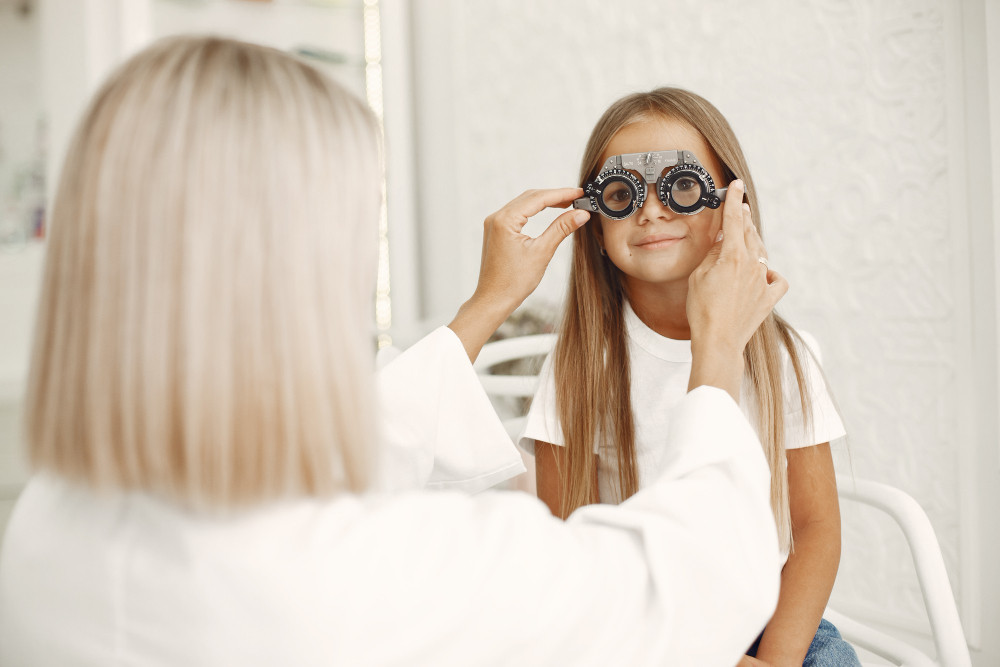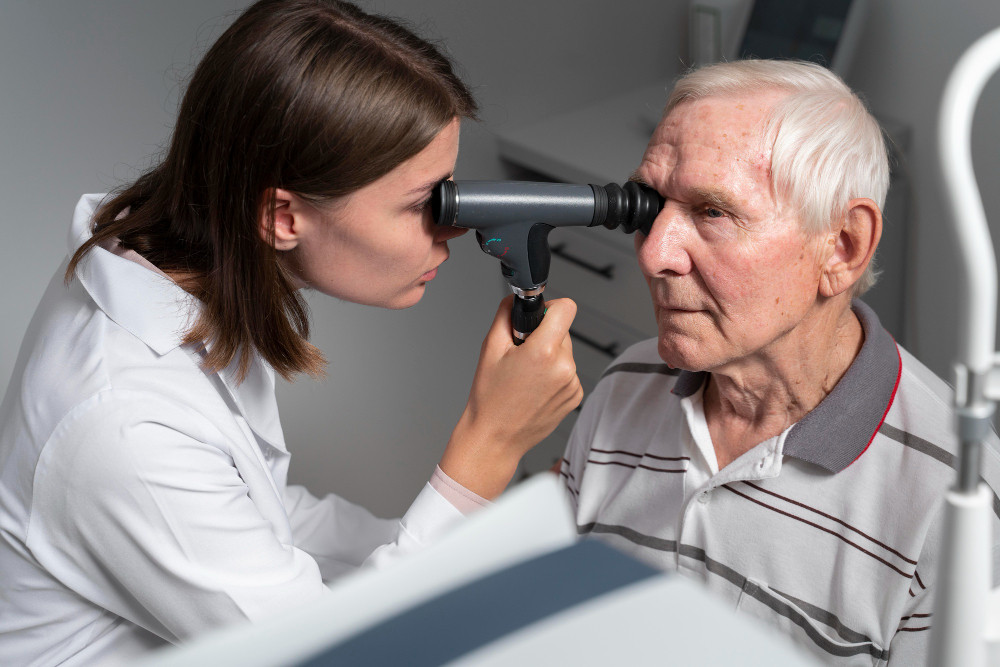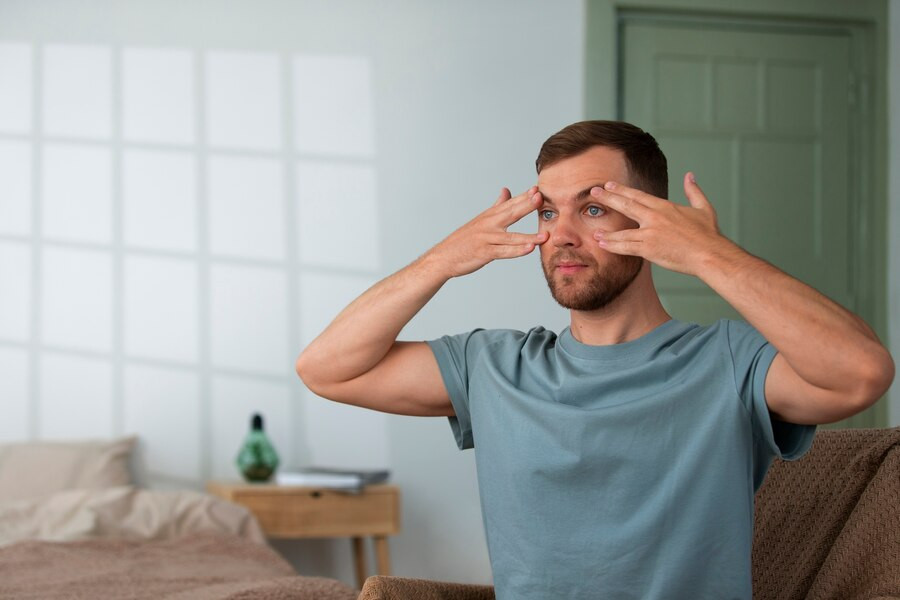Mata juling adalah kondisi dimana posisi kedua mata tidak sejajar dan meliihat ke arah yang berbeda. Pada anak-anak, jika tidak ditangani dengan tepat kondisi ini dapat berkembang menjadi amblyopia yaitu mata malas yang menyebabkan penglihatan menurun. Apa saja gejala mata juling pada anak dan bagaimana penanganan yang tepat? Simak ulasannya dalam artikel berikut.
Apa Itu Mata Juling?
Mata juling atau strabismus adalah kondisi kedua mata tidak sejajar. Normalnya, kedua mata mengarah ke arah yang sama, namun pada mata juling, satu mata mengarah ke arah yang berbeda dari mata lainnya. Satu mata menghadap ke depan, tetapi mata yang lain mengarah ke samping, atas, atau arah lainnya.
Bila salah satu mata tidak sejajar, masing-masing mata mengirimkan sinyal yang berbeda ke otak. Pada anak kecil, otak belajar untuk mengabaikan gambar dari mata yang tidak sejajar. Sebaliknya, otak hanya melihat gambar dari mata yang lurus atau yang penglihatannya lebih baik. Akibatnya, secara perlahan mata juling dapat berkembang menjadi mata malas atau ambliopia.
Baca Juga: Tanda-Tanda Memiliki Mata Plus
Tanda-Tanda Mata Juling
Mata juling pada anak bisa diidentifikasi sejak usia bayi atau balita. Sejak usia 3-4 bulan, bayi mulai bisa fokus pada objek yang dekat dengan posisi kedua mata. Namun pada bayi juling, posisi matanya akan menunjukkan perbedaan arah gerak ketika dihadapkan pada satu objek.
Beberapa tanda mata juling pada anak yang perlu diperhatikan antara lain:
- Penglihatan kabur
- Posisi kedua mata tidak sejajar
- Kedua mata tidak melihat ke arah yang sama
- Anak menutup mata saat berusaha fokus pada suatu objek
- Gerak mata tidak terkoordinasi
Penyebab Mata Juling
Mata juling disebabkan oleh adanya gangguan pada pergerakan otot mata. Kondisi ini bisa terjadi akibat bawaan lahir atau pengaruh genetik. Umumnya anak yang mengalami mata juling memiliki riwayat mata juling pada keluarga.
Beberapa faktor risiko yang menyebabkan terjadinya mata juling antara lain:
- Gangguan refraksi (penglihatan buram) mata yang tidak dikoreksi
- Penglihatan buruk pada satu mata
- Kelahiran prematur
- Cerebral palsy
- Sindrom Down
- Hidrosefalus
- Tumor otak
- Cedera kepala
- Stroke
Baca Juga: Cara Mengatasi Mata Kering Akibat Penggunaan Lensa Kontak
Penanganan Mata Juling
Penanganan mata juling perlu disesuaikan dengan kondisi pasien. Dokter dapat merekomendasikan berbagai pengobatan mata juling sesuai dengan kondisi spesifik mata juling yang dialami. Beberapa pilihan pengobatan mata juling mencakup:
- Penggunaan kacamata atau lensa kontak: Jika mata juling disebabkan oleh adanya gangguan refraksi (penglihatan buram) yang belum dikoreksi, dokter dapat merekomendasikan penggunaan kacamata atau lensa kontak untuk membantu mata Anda tetap lurus.
- Penggunaan lensa prisma: Pemakaian kacamata khusus untuk membelokkan cahaya yang masuk ke mata sehingga menyamarkan penglihatan ganda.
- Ortoptik: Terapi mata khusus untuk melatih koordinasi pergerakan otot mata.
- Obat-obatan: Tetes mata, salep, atau suntikan botox untuk melemahkan otot mata yang terlalu aktif.
- Penutup mata: Penggunaan penutup mata pada mata yang berfungsi paling baik untuk melatih mata yang memiliki koordinasi gerak otot mata kurang baik.
- Operasi otot mata: Operasi yang dilakukan untuk mengubah ukuran atau posisi otot mata sehingga mata menjadi sejajar dengan benar.
Mata juling perlu mendapat penanganan yang tepat. Jika Anda melihat si kecil menunjukkan gejala mata juling sebaiknya segera periksakan ke dokter agar mendapat perawatan yang sesuai. Anda juga bisa memanfaatkan fitur konsultasi pada aplikasi Ai Care yang bisa diunduh melalui App Store dan Play Store.
Mau tahu informasi seputar penyakit lainnya? Cek di sini, ya!
- dr Nadia Opmalina
Boyd, K. (2023). Strabismus in Children. Available from: https://www.aao.org/eye-health/diseases/strabismus-in-children
Cleveland Clinic. Strabismus (Eye Misalignment). Available from: https://my.clevelandclinic.org/health/diseases/strabismus-eye-misalignment
Kids Health. Strabismus. Available from: https://kidshealth.org/en/parents/strabismus.html
Mayo Clinic. (2019). Strabismus: The importance of timely, specialized care. https://www.mayoclinic.org/medical-professionals/pediatrics/news/strabismus-the-importance-of-timely-specialized-care/mqc-20452790












